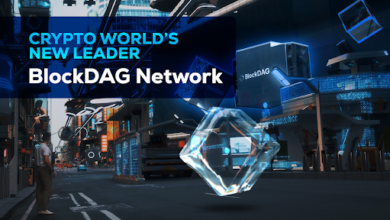The Rise of Programmatic Advertising: Revolutionizing the Digital Marketing Landscape

Staying ahead of the curve is essential for businesses looking to maximize their reach and impact. One of the most significant advancements in recent years is the advent of programmatic advertising. This revolutionary approach to ad buying and placement has transformed the way companies connect with their target audiences online. In this article, we’ll explore the ins and outs of programmatic advertising, its benefits, and how businesses can leverage it to achieve their marketing goals.
Programmatic advertising refers to the automated process of buying and selling digital ads in real-time through an auction-based system. Unlike traditional ad buying methods that involve manual negotiations and placements, programmatic advertising relies on data and algorithms to target the right audience with the right ad at the right time. This automated approach streamlines the ad buying process, making it more efficient and cost-effective for advertisers.
How Does Programmatic Advertising Work?
At the heart of programmatic advertising is data. Advertisers use audience data, such as demographics, browsing history, and online behavior, to create highly targeted ad campaigns. This data is then fed into a demand-side platform (DSP), where advertisers can set their campaign parameters, such as budget, targeting criteria, and bidding strategy.
On the other side of the equation, publishers make their ad inventory available on ad exchanges, where it is sold to the highest bidder in real-time auctions. When a user visits a website or app, the publisher’s ad space is instantly auctioned off to advertisers whose targeting criteria match the user’s profile. The winning ad is then displayed to the user, all within milliseconds.
Benefits of Programmatic Advertising
Targeted Reach:
Programmatic advertising allows advertisers to reach highly specific audiences based on a wide range of criteria, including demographics, interests, and online behavior. This precision targeting ensures that ads are served to the most relevant audience, increasing the likelihood of engagement and conversion.
Real-Time Optimization:
With programmatic advertising, advertisers can continuously monitor and optimize their campaigns in real-time. This means adjusting bidding strategies, targeting criteria, and ad creative on the fly to maximize performance and ROI.
Efficiency and Cost-Effectiveness:
By automating the ad buying process, programmatic advertising eliminates the need for manual negotiations and reduces overhead costs. Advertisers can also benefit from more competitive pricing, as the auction-based system ensures that they pay the true market value for ad inventory.
Enhanced Transparency and Accountability:
Programmatic advertising provides advertisers with greater transparency into where their ads are being placed and how they are performing. This visibility allows advertisers to identify which channels and placements are driving the best results and allocate their budgets accordingly.
Cross-Channel Integration:
Challenges and Considerations
While programmatic advertising offers many benefits, it also comes with its own set of challenges and considerations. These include:
Ad Fraud:
The automated nature of programmatic advertising can make it vulnerable to ad fraud, such as bot traffic and invalid clicks. Advertisers need to implement robust fraud detection and prevention measures to mitigate these risks.
Brand Safety:
Advertisers must also be mindful of where their ads are being placed to ensure brand safety. This includes avoiding potentially controversial or inappropriate content that could damage their brand reputation.
Data Privacy and Compliance:
With the increasing focus on data privacy and regulations such as GDPR and CCPA, advertisers need to ensure that they are collecting, storing, and using consumer data in compliance with relevant laws and regulations.
Ad Blocking:
The rise of ad blockers presents a challenge for advertisers looking to reach their target audience online. Advertisers need to focus on creating non-intrusive, relevant ads that provide value to users to minimize the impact of ad blocking.
Conclusion
Programmatic advertising represents a seismic shift in the way digital advertising is bought and sold. By harnessing the power of data and automation, advertisers can reach their target audience with greater precision, efficiency, and effectiveness than ever before. However, navigating the complexities of programmatic advertising requires careful planning, strategic execution, and a commitment to staying abreast of the latest trends and technologies. With the right approach, businesses can leverage programmatic advertising to drive results and stay ahead of the competition in today’s digital landscape.





